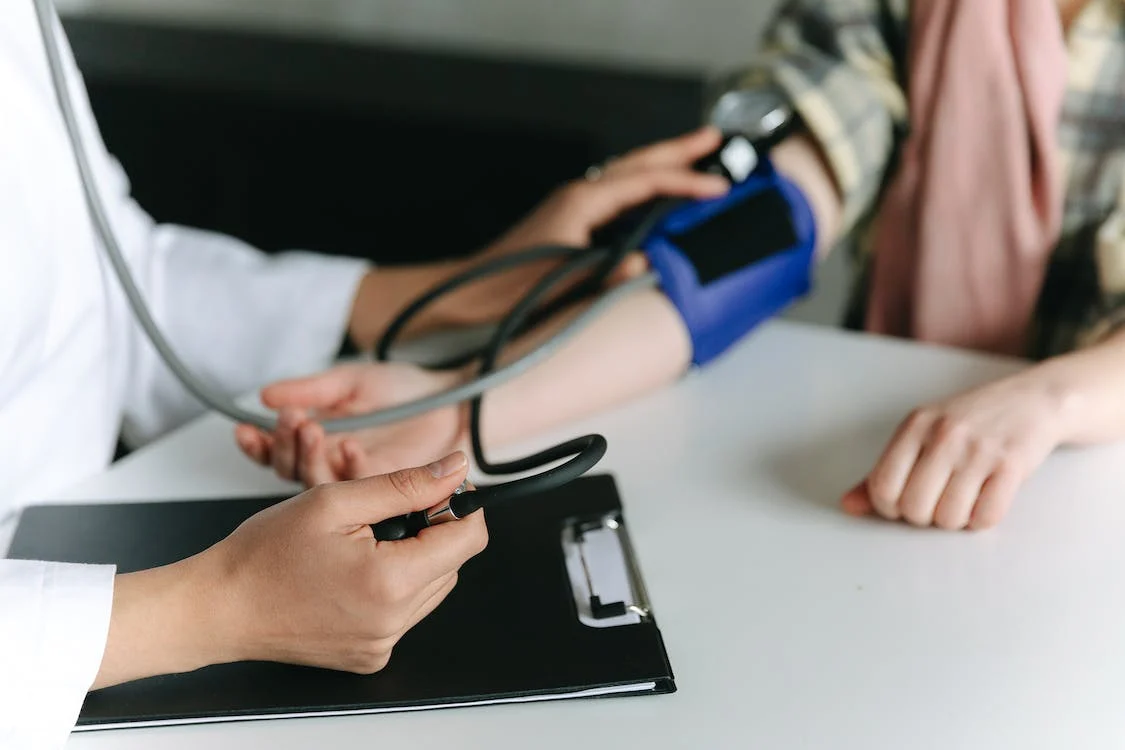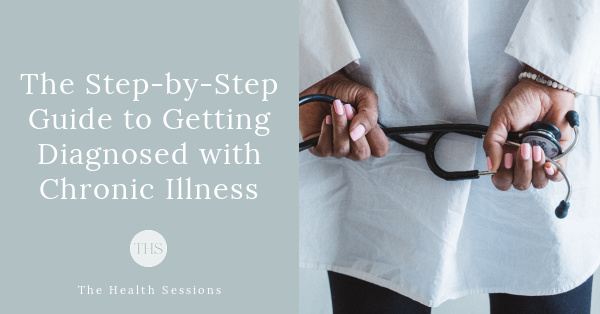How to Boost Your Circulation Naturally

You probably did not wake up one morning and all of a sudden you had arthritis, inflammatory bowel disease or POTS. Most of the time, it’s a gradual, complex process to go from having scary symptoms to getting diagnosed with a chronic illness. Sometimes, it’s pretty clear for doctors what’s wrong with you, but other illnesses do not show up on so obviously on test results and scans.
During every stage of the diagnostic process, you will experience different emotions and concerns, all requiring a slightly different coping strategy. That’s why I’ve rounded up my best articles on how you can navigate each phase of getting diagnosed with a chronic illness.
When you’re usually healthy and you come down with stomach aches, back pain or skin rashes, you expect to go to your doctor for an examination, learn what’s causing your symptoms and pick up a cure for your problem at the pharmacy. But a lot of the time, getting the right diagnosis and treatment is not that simple.
Fatigue, headaches and abdominal pain can all be a symptom of many illnesses. At the same time, patients with the same underlying illness can present with a wide variety of symptoms. One person with dysautonomia could be struggling mostly with dizziness, heart palpitations and shortness of breath, while another dysautonomia patient suffers more from nausea, constipation and headaches.
Looking at your blood work or urine samples will give your doctors important clues about what can and cannot be causing your problems, but lab results won’t give them all the answers. For example, at the time of writing, there is no single test that can diagnose well-known disorders like multiple sclerosis (MS). Some chronic illnesses are even mainly diagnosed by eliminating all other possible causes, like ME/CFS and Crohn’s disease.
And let’s not forget that, although by definition the chances are very low, you could be having a rare disease that’s not really on the radar of your general practitioner.
So how can you best navigate this uncertain period before getting a diagnosis?

If you want, you can track your symptoms, sleep habits, food patterns or medication intake to get a better insight into vague health problems. Logging this kind of health information can also make it easier to communicate your symptoms clearly to your doctors. However, please do not rely on WebMD to diagnose yourself. There’s a good reason why physicians spend so many years in medical school, and not even the best doctor in the world can find the cause of your health problems through a screen. In that same spirit: don’t keep Googling your symptoms and doom scrolling through worst case scenarios. You will only upset yourself, fearing things that may not even come true.
To easily track your symptoms, take a look at The 5 Health Apps You’ll Want to Download.
Of course it’s totally normal to feel scared and upset when your heart’s racing, you feel faint all the time or you have trouble swallowing. But staying up all night worrying will not make your symptoms go away – in fact, longterm stress probably only worsens your health problems. So what can you do to not go into panic mode and keep your anxiety within ‘normal’ ranges? The tips in these articles could help you out:
Depending on your health problems and how long it takes to get doctor’s appointments where you live, it can take a while before you know what’s wrong with you – and what can be done to fix or manage your symptoms. But what are you supposed to do in the mean time? How do you deal with the pain, fatigue or stress without medication or therapy?
There are no quick fixes or one-size-fits-all solutions, but here are some ideas on how you can support your health while you’re waiting for a diagnosis and treatment:
This is a time to be patient, but not passive. If you’re physically and mentally up for it, get into problem-solving mode. Be your own health advocate and come prepared to doctors appointments. Communicate clearly how and when your symptoms started, your specific concerns and what the goal of your visit is. Sometimes you simply want to rule out if there’s no serious underlying cause of your health problems, while other times you really need help easing your symptoms, no matter what causes them.
You can also make a list of questions you have for the medical professionals, about the diagnostic process, potential treatment options or next steps to take. If that helps you, bring a family member or close friend for support, or take notes to help you remember the important things being said.
Learn all you need to know about What to Do While Doctors Figure Out What’s Wrong with You here.

Even if you’ve been struggling with sickness for a while, it can be a huge shock to receive a definitive diagnosis of a chronic illness. Because now you know that those horrible symptoms you’ve been experiencing won’t go away anytime soon.
For some people, it can actually be a relief to finally learn what’s been causing their health problems. And how you’ll react to being diagnosed with asthma, heart disease or migraine will also depend on your prognosis, the available treatment options and how much effect your illness will have on your daily life. Obviously it’s easier to process a diagnosis that’s easily to manage with medications than a painful chronic illness that will likely get worse over time.
When getting diagnosed with chronic illness has turned your world upside down, how do you start to make sense of it all?
One of the most important things to realize is that you won’t feel like you do now forever. You’ll probably go through different emotional stages, from shock and helpless to feelings of despair or being angry at the world why this is happening to you. Make room for all your feelings – there’s no right or wrong way to react to becoming chronically ill.
Because your health and how you’ll deal with your illness will change over time, try not to look too far ahead into the future. It’s normal to worry, but don’t keep going over and over your problems in your mind. For tips on how to handle this anxiety, check out 7 Coping Strategies to Deal with Health-Related Anxiety. And during this period, when overwhelm, worry and stress can’t be prevented or escaped, try to find effective ways to deal with uncontrollable stress and make enough time for relaxation and happy distractions.
You also don’t have to go through this alone. Seek support from your family and friends, get information from patient organizations or look for a support group in your area. You can find more tips on how to get emotional and practical help from your loves ones in Rally the Troops: How to Mobilize Your Support System.
But don’t forget that your partner, parents and children may also need some support to adjust to this new situation. Read all about how your whole family can come to terms with the difficult news in 4 Family Coping Skills After a Loved One’s Unexpected Diagnosis.
Get all the helpful advice from “I’m Diagnosed with a Chronic Illness, Now What Do I Do?”

There’s no escaping it: your chronic illness won’t magically disappear, so you’ll have to deal with your symptoms and limitations as well as you can. Aside from following treatments and therapy, and taking your doctor’s tailored advice, what can you realistically do to manage your illness and support your recovery?
None of these practices will make your chronic illness go away overnight, but finding ways to manage your symptoms better and to support your overall wellbeing can make a huge difference to your quality of life and to your longterm health.
Start rebuilding your health after illness by creating your own action plan for recovery.

Adjusting to your new reality of being chronically ill takes time and effort, and there’s no manual on how to learn to live with your diagnosis.
It’s completely normal to grieve your old life and your old self when chronic illness influences your thoughts, emotions, daily routines and outlook on life so much. Especially when you can no longer do activities you used to enjoy, you probably miss the things that make you you. If you’re looking to feel understood and a little less alone, take a look at these helpful articles:
Even if it doesn’t feel like that now, you will eventually come to terms with your new reality. However, accepting your chronic illness does not mean you’re giving up hope or that you’re a quitter who’s too weak to fight for their health. You can still keep hope in your heart for a better future and make the most of your life as it is right now. Every major change in life requires you to partly let go of the person you thought you were and the future you had envisioned, and to write a new narrative for yourself. Here is some in-depth advice that can help you with acceptance and gradually getting a new perspective:

Practically, you’ll probably need to figure out ways to get things done, like self care, household chores, perhaps work, study or looking after the kids, despite of the pain, fatigue and symptoms you’re experiencing. Chances are, you’ll also need to ask the people in your life for help, while keeping your relationships strong and maintaining some sense of independence. And communicating your new limitations to your family, friends and coworkers in a kind but clear way is often harder than it may seem. Check out these blog posts for tried-and-tested tips on these topics:
Eventually, you will be able to create new daily routines, find new ways to express your love and celebrate your friendships, go after your goals and dreams, and give new meaning to your life. And although obviously you still wish you’d never gotten sick in the first place, sometimes good things can come out of a bad situation too. Read more here:
No matter what stage of the diagnostic process you’re in right now, I hope this step-by-step guide will give you the support and practical tips you need to navigate getting diagnosed with chronic illness as best as possible.
Get more tried-and-tested tips about living a good life with chronic illness delivered straight to your inbox by signing up for your free weekly health ‘sessions’.